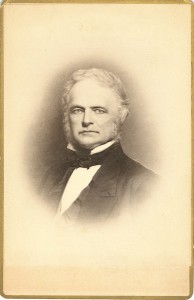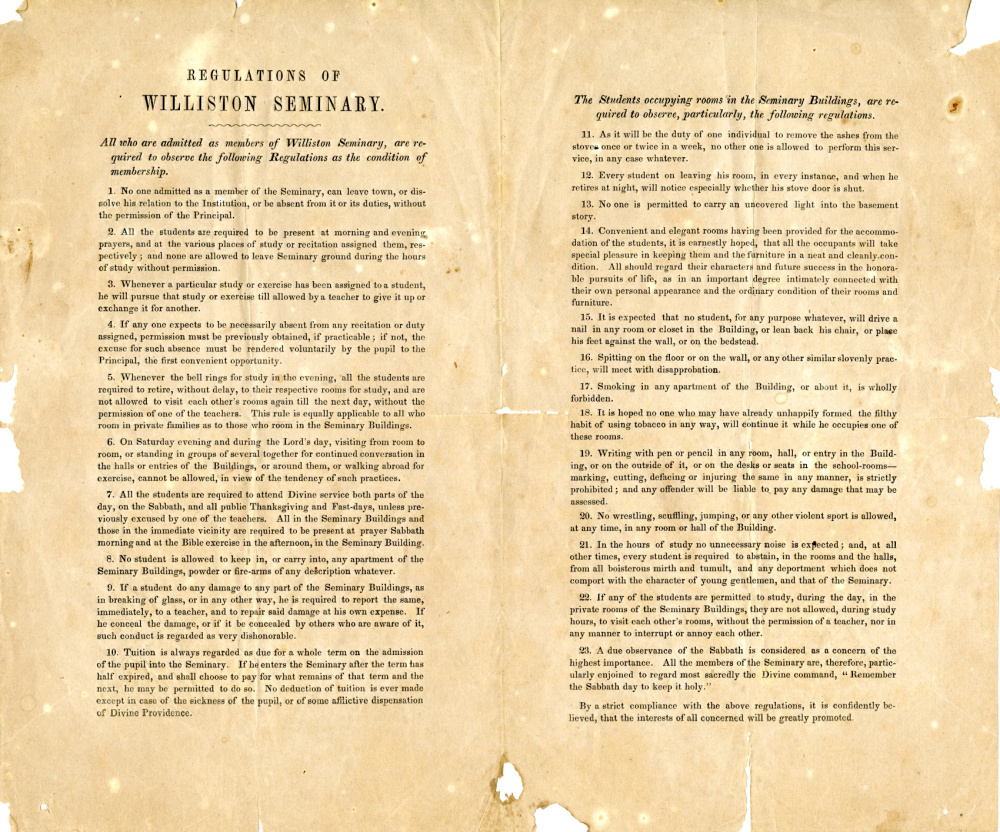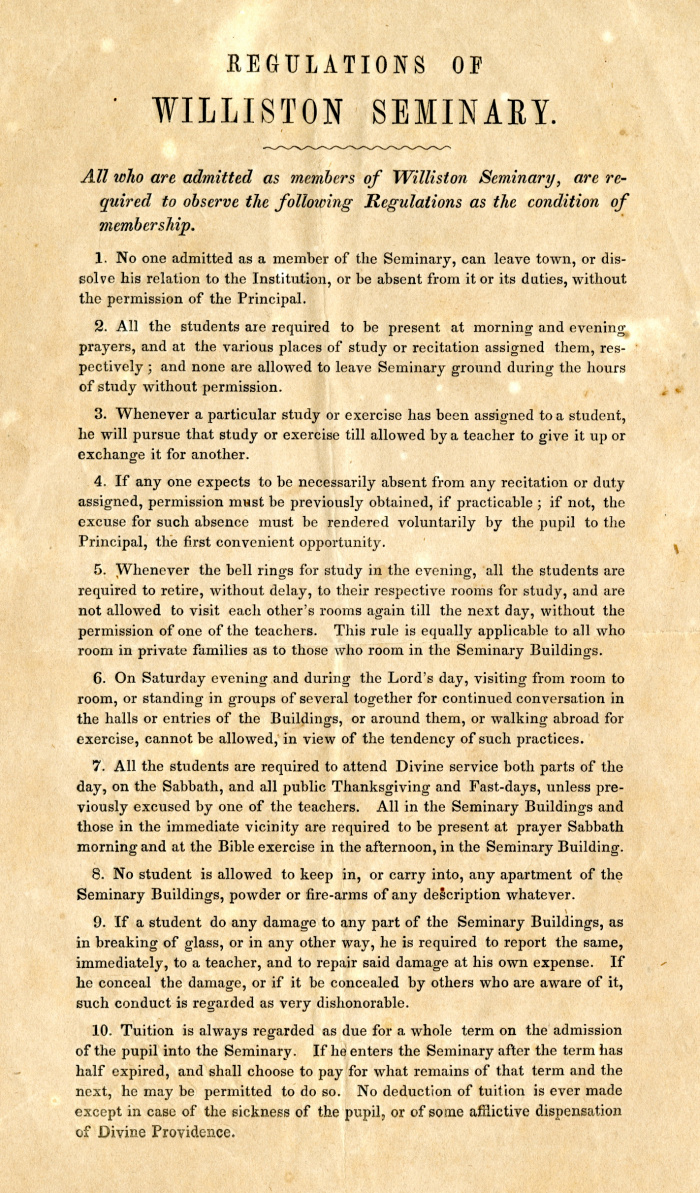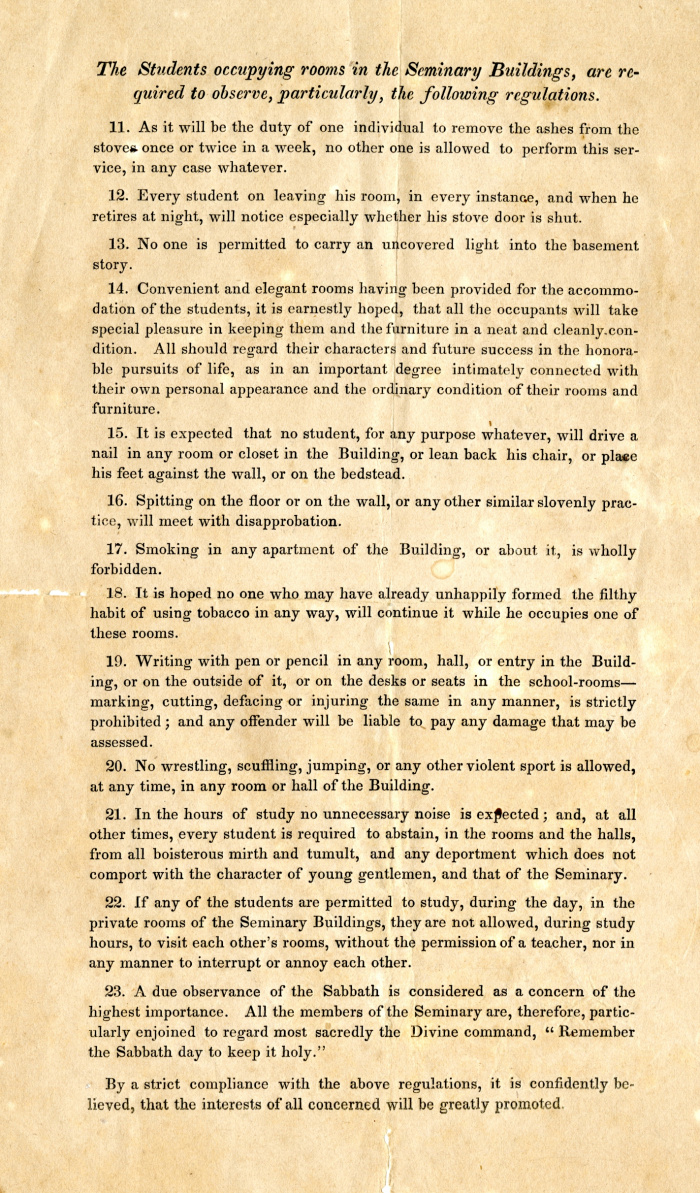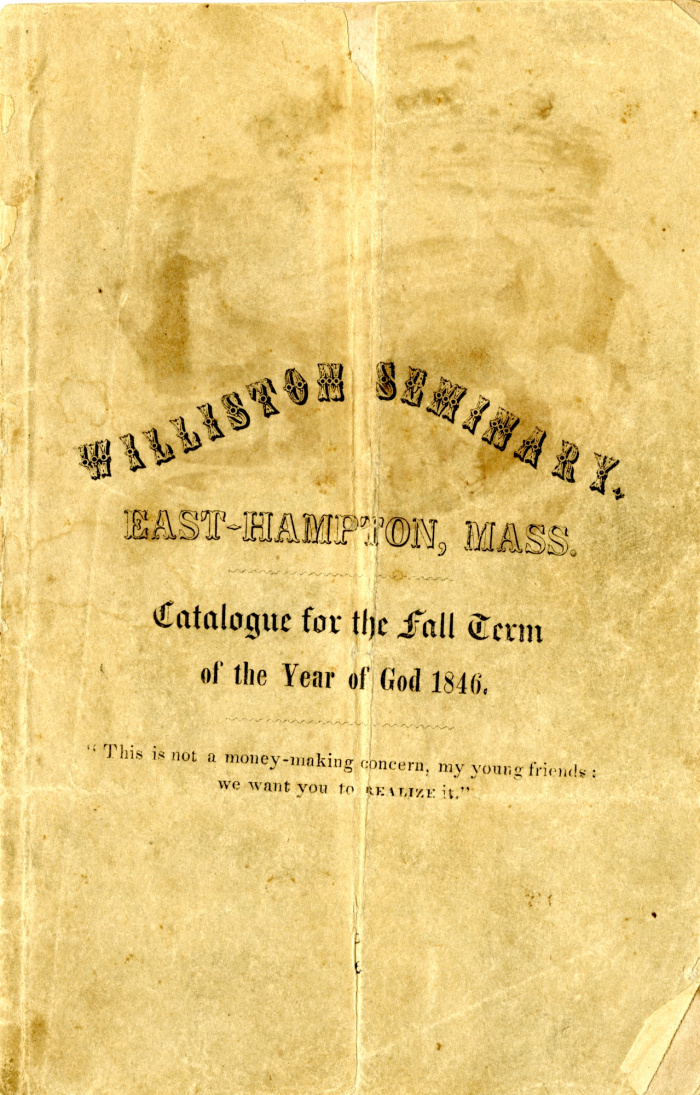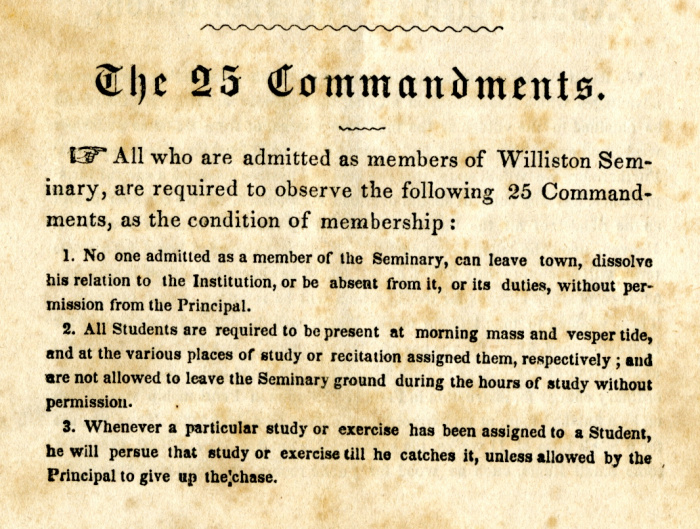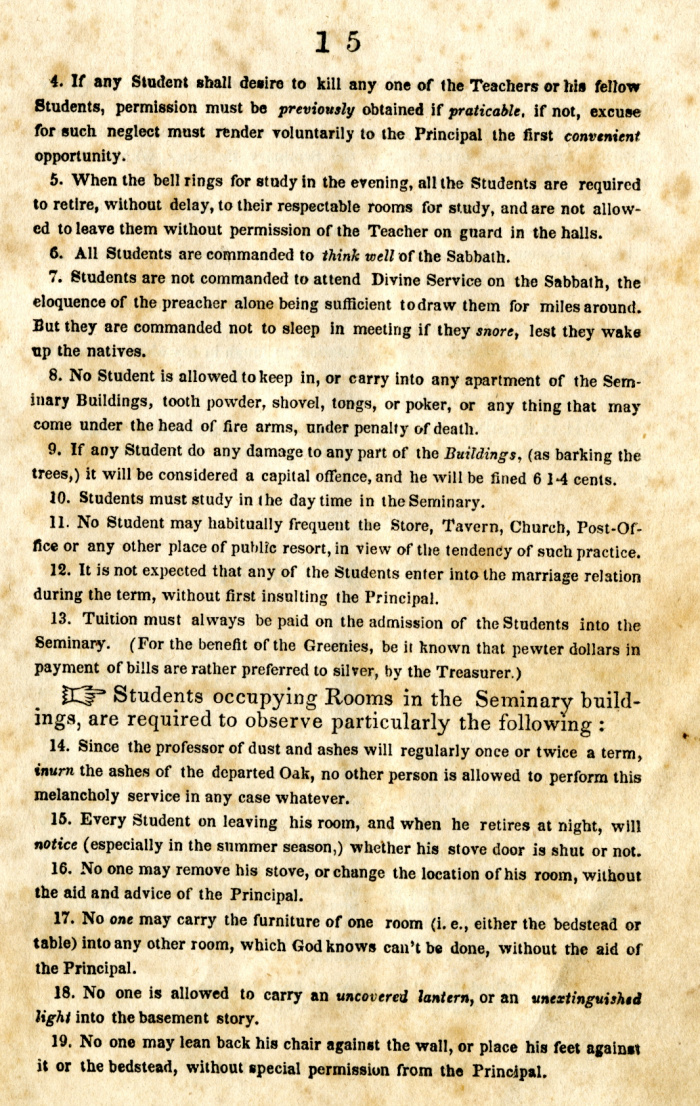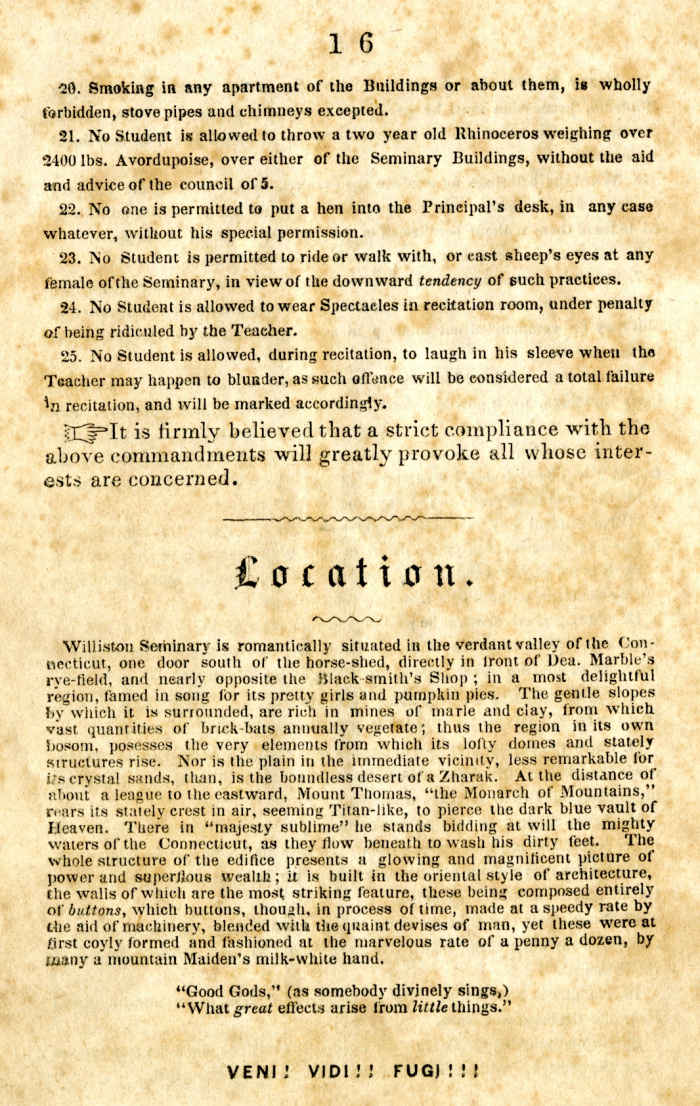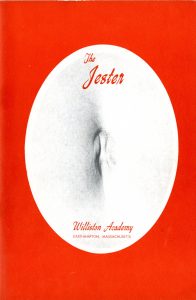 1967: Williston Academy’s Literary Society had, for many years, published an oh-so-serious magazine called The Scribe. Imagine, then, the excitement when the Society announced that they would depart from venerable tradition and attempt a humor magazine. The first, and only issue of The Jester appeared in the winter of 1967. Almost immediately, certain elements in the administrative hierarchy objected to the cover on grounds of taste, until it was pointed out that the navel in question, which belonged to our champion diver, was on display in the pool every afternoon.
1967: Williston Academy’s Literary Society had, for many years, published an oh-so-serious magazine called The Scribe. Imagine, then, the excitement when the Society announced that they would depart from venerable tradition and attempt a humor magazine. The first, and only issue of The Jester appeared in the winter of 1967. Almost immediately, certain elements in the administrative hierarchy objected to the cover on grounds of taste, until it was pointed out that the navel in question, which belonged to our champion diver, was on display in the pool every afternoon.
51 years later, this seems relatively innocuous. Tasteless, yes, but hardly provocative. But our plan to republish substantial excerpts here was somewhat modified when we realized that by 2018 standards, the magazine was so replete with trademark violations, potential libel suits, and what are now called “trigger warnings,” that we had to be very selective. Plus: some of it was too insider-obscure to resonate today, or just wasn’t very funny.
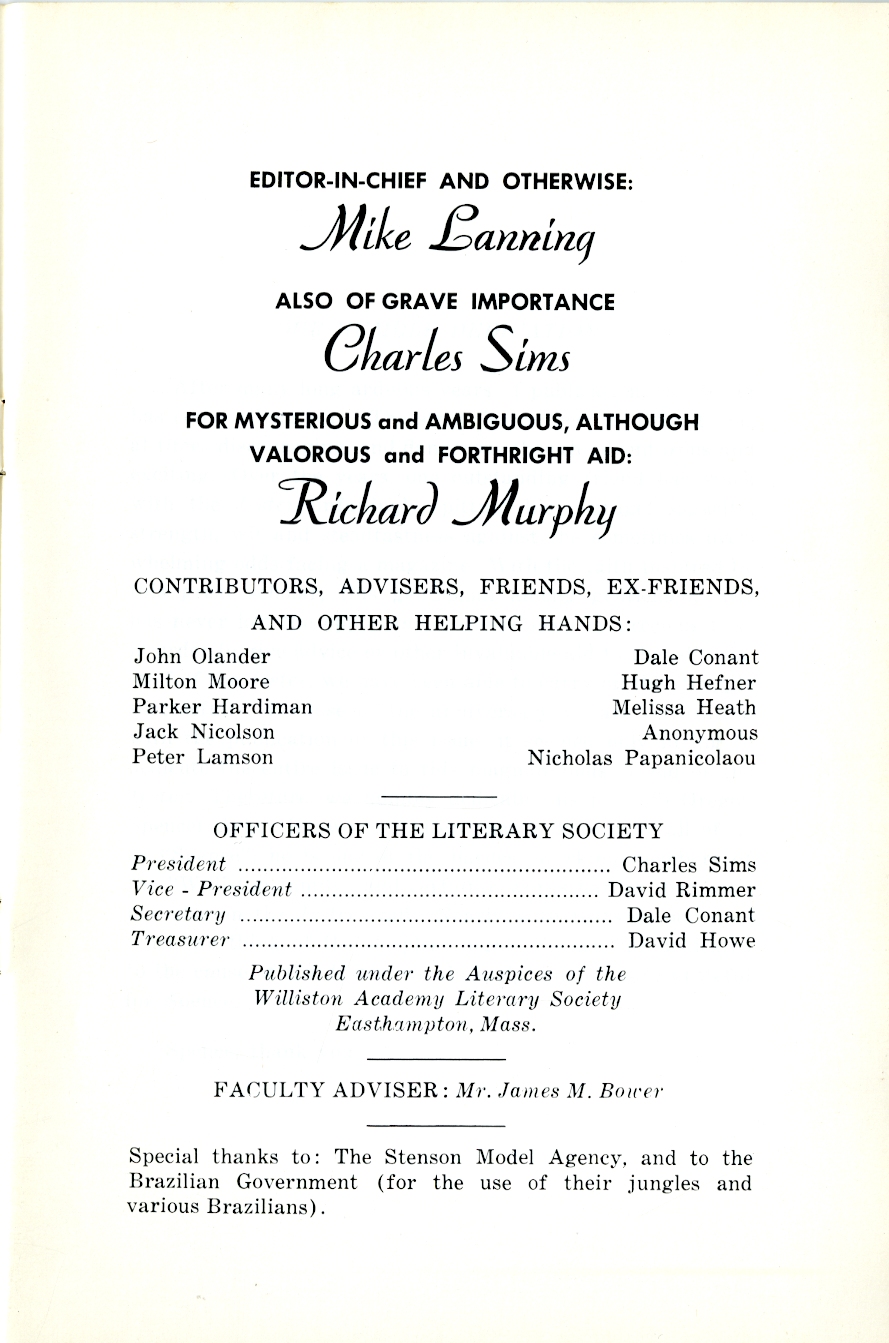
But much of it was funny, or clever, and still is. Perhaps against our better judgment, here are excerpts, beginning with a parody of that prep-school classic, The Catcher in the Rye.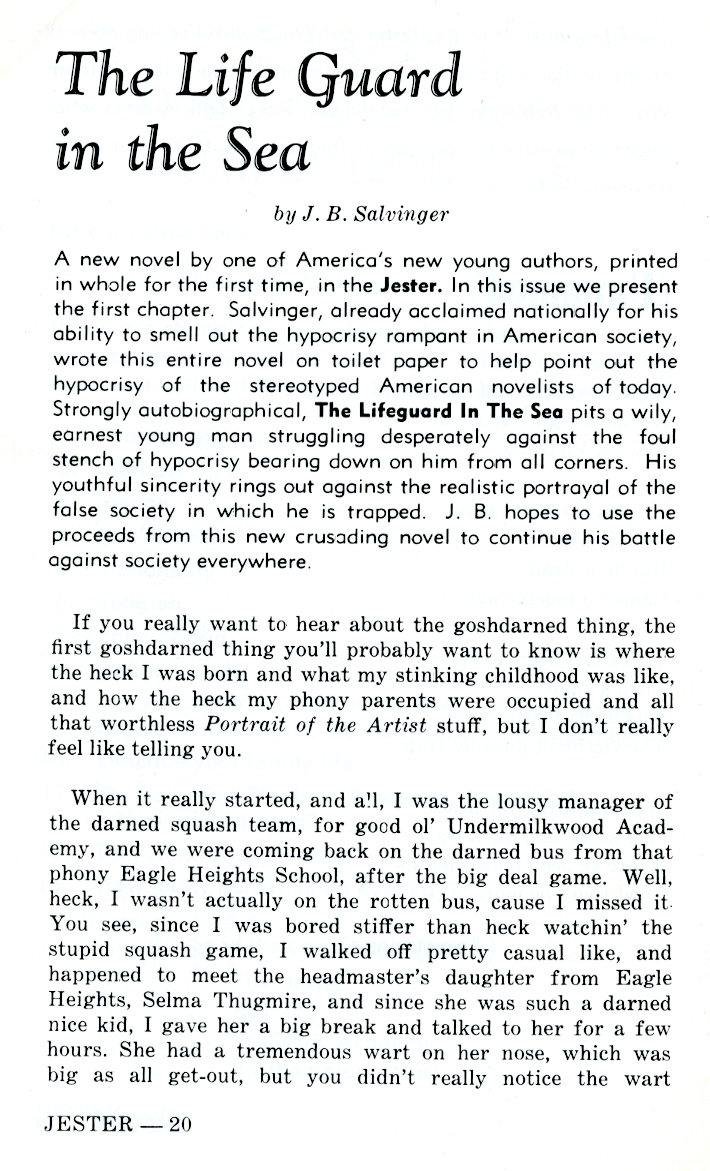
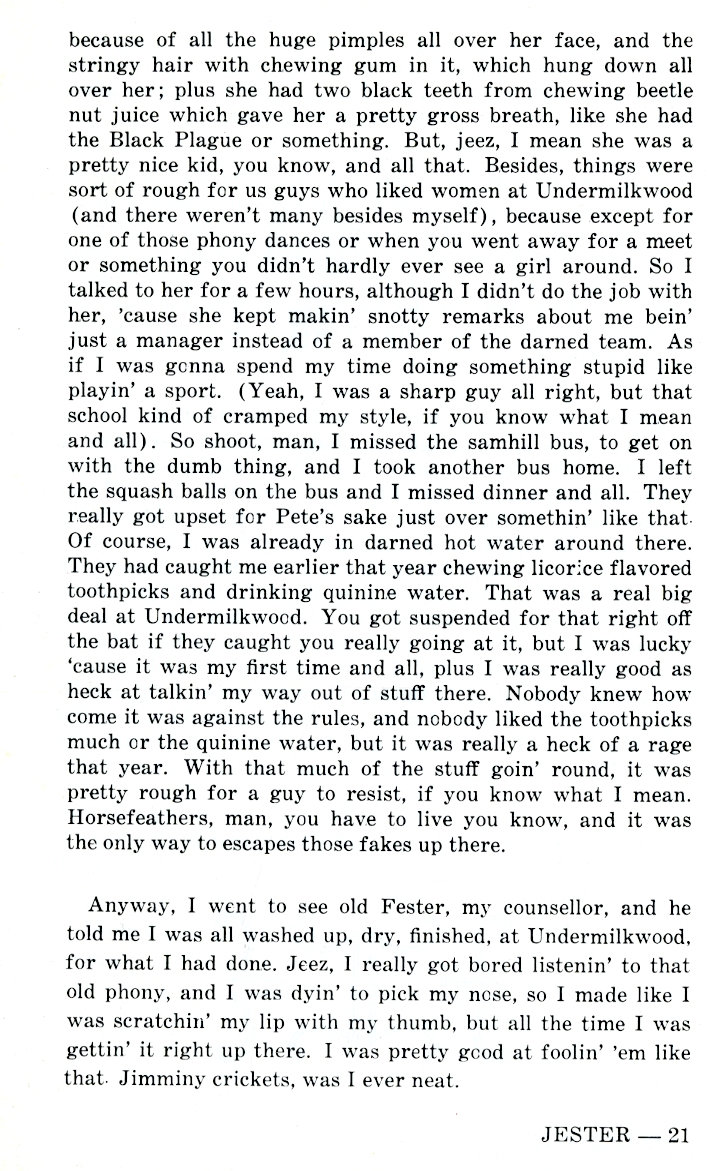
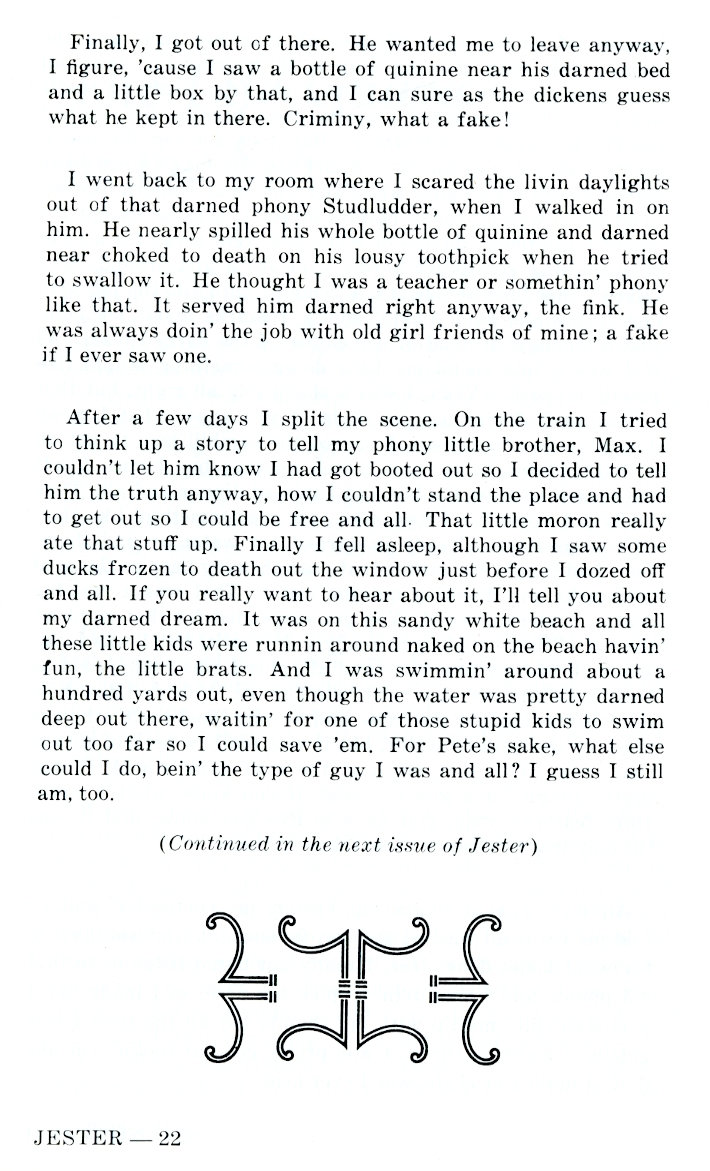
Poetry. After all, The Jester was published by a Literary Society.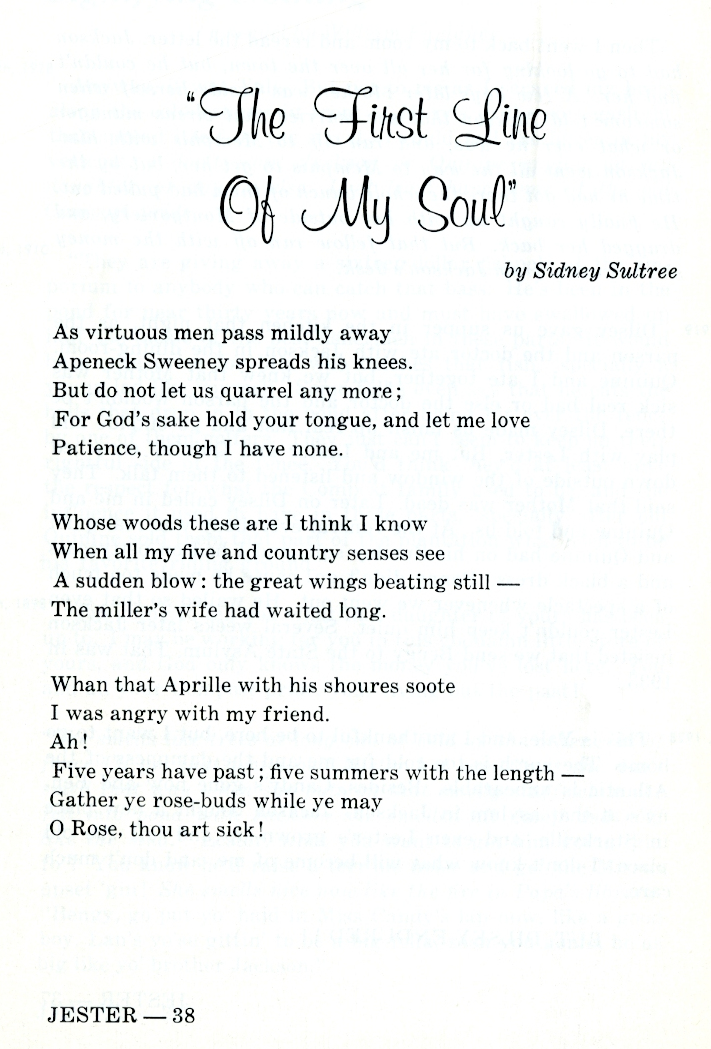 Continue reading
Continue reading


